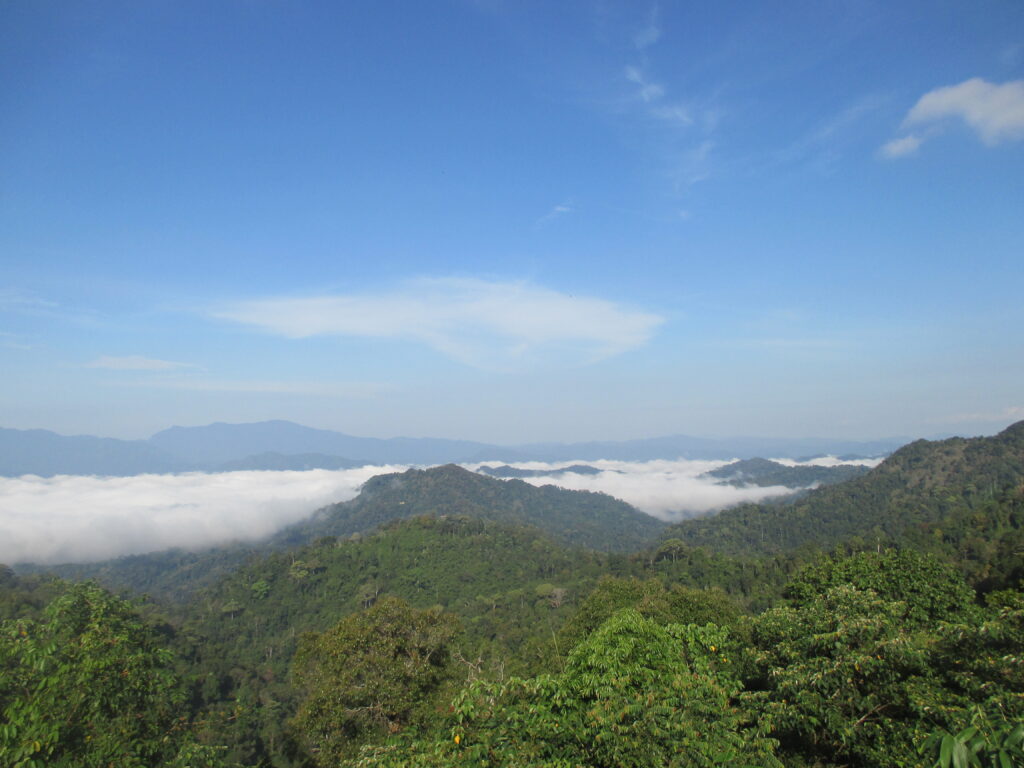Backpacking In Thailand - part two
Kui Buri
While heading north back to Bangkok, I discovered there were wild elephants to be seen in a national park nearby. But in 2014 information about Khao Yai was scarce, with little to no information on how to get there. The only option I found was to take a bus, which dropped us at the end of the main road heading towards the park. From there, we stuck out an arm in the hope of a ride.
We were kindly picked up by a Thai couple and taken to the sole guesthouse around, near the park border. The host was incredibly friendly, taking us to the entrance where we bought entry to Kui Buri for a safari that afternoon.
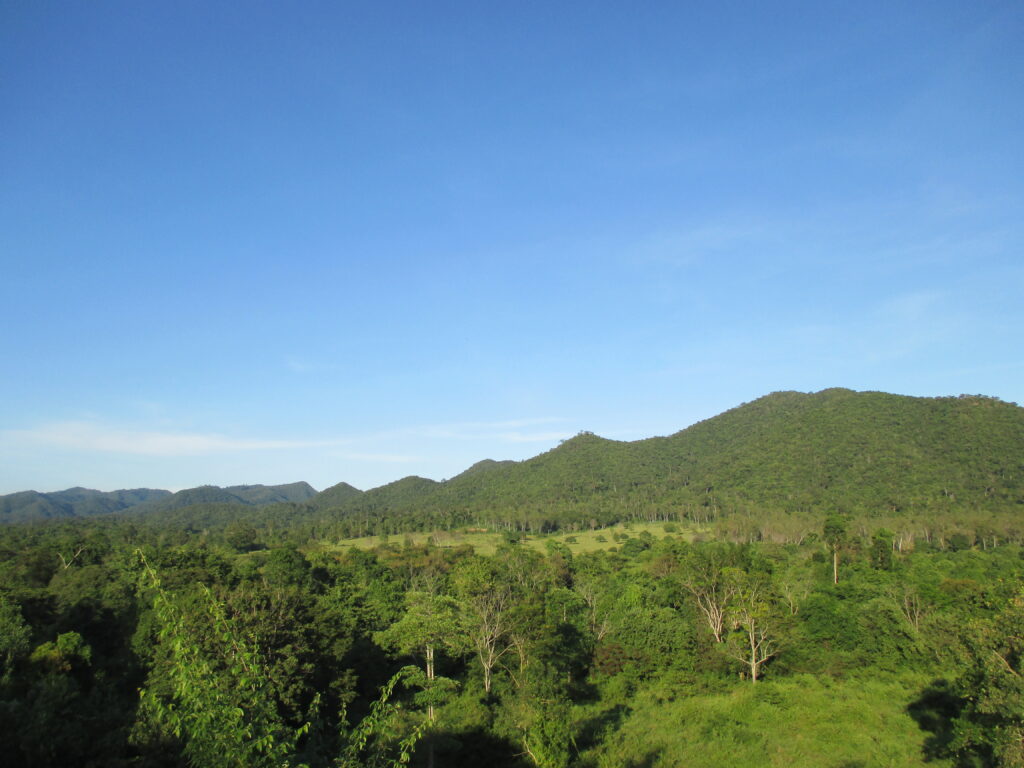
On safari
Kui Buri is a large expanse of forest and grassland – the ideal habitat for its large inhabitants – Asian elephants. It was compulsory to go with a guide, on the back of a pickup truck, to enter the park. We first drove along a track through the woods until we made it to a dense bush area. Here we had our first sighting, albeit from afar, of an elephant. They appeared quite uninterested in our presence as we watched from distance through the trees.
The next stop was at a manmade watchtower, overlooking a huge expanse of grass. On another day, it would be a great place to spot a herd wander across the plains. On that day, we didn’t spot a single elephant in the hour we spent watching. As is the way with wildlife watching, luck plays a huge part. As the light began to fade, we started to make our way back out of the park.
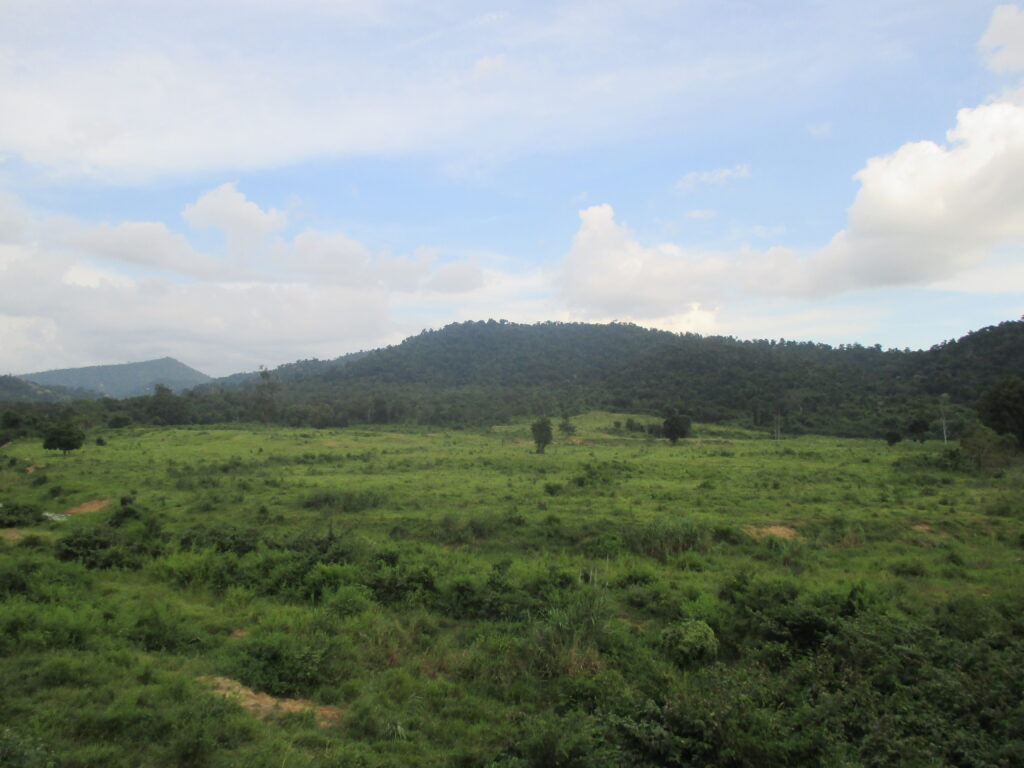
Out of the bush
On the way out of the park, after passing a large pond to our left, our driver made a sudden stop. The guides talked between themselves and pointed to the forest beyond the far side of the pond. And so, we waited… until there they were, bursting out of the trees – two huge elephants.
Seeing elephants up close made them even more impressive. They simply created a new path for themselves by grazing on the bushes around them. They are scarily big, which made me grateful for the body of water between us.
We stood by our vehicles, quietly admiring the elephants for about twenty minutes, simply gazing as they ate and drank casually, at their own pace, paying no heed to the watchers opposite.
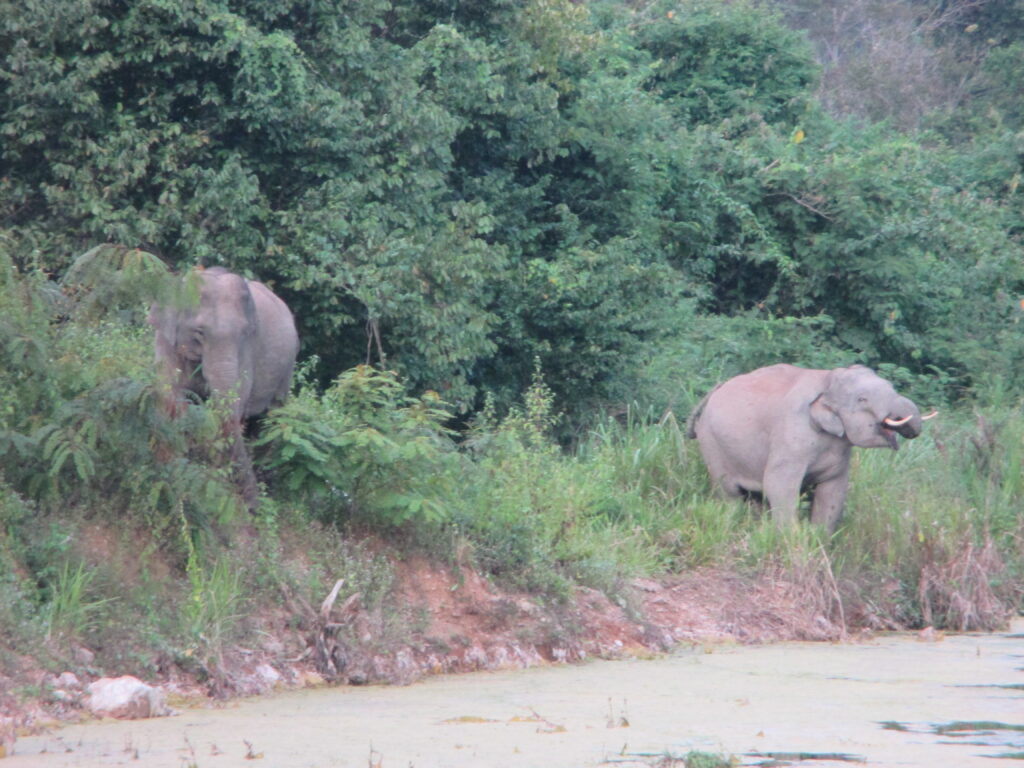
Day two
The following morning, our kind host picked us up and provided breakfast for us at sunrise, overlooking a valley. Entranced by the first visit, we decided to go into Kui Buri for a second day; we had multiple sightings throughout the park. The first was of a large bull elephant, from the car. The second, a fleeting sighting of a young elephant, beyond a hill.
We didn’t manage to see the other well-known resident, the Gaur – large wild cattle found across Asia. With the amount of elephant sightings, though, it was hard to be disappointed. It’s worth noting though, sightings of wild animals are never guaranteed. As disappointing as it can be, it makes me more grateful when I have the encounters I hope for.
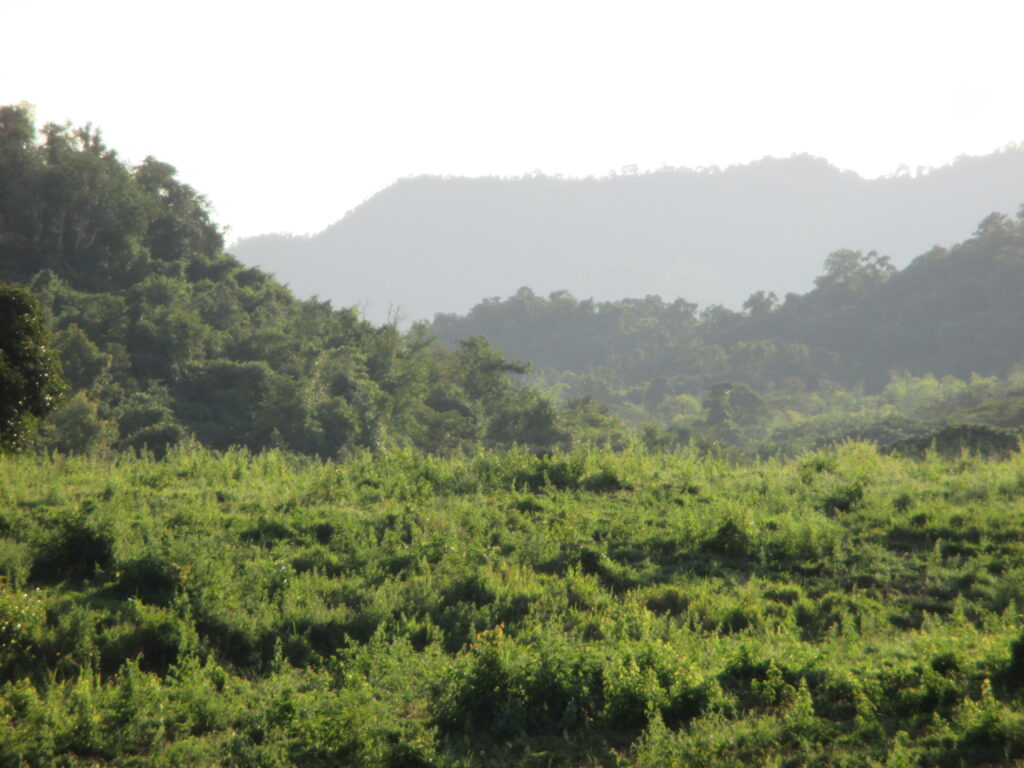
Khang Krachan
The next stop of note in Thailand was another national park, Khang Krachan¸ a park popular with tourists. A direct bus from the town of Petchaburi went to the park entrance. At the visitor headquarters we booked our stay; two nights camping at two different locations in the park. We also paid for a ride between each. At each campsite there were cafes and restaurants serving meals.
We entered Khang Krachan in the late afternoon, and we were driven along much of the paved road cutting through it, climbing higher to the upper echelons of the park. On route, our keen-eyed driver spotted langurs in trees above us – these turned out to be common sightings as there appeared to be a healthy population of the monkeys.

The call of the gibbon
The first campsite, in its elevated position, gave a 360-view of the jungle below. It made a fantastic place to watch the sun set in the evening and to see the mist rise in the morning. The morning mist was so thick it obstructed the views on a walk to the jungle edge – it eventually cleared by mid-morning. Once it had cleared, the animals appeared. We spotted troops of langurs in the tall trees above us.
Amongst the chattering of many langurs, we heard the call of a gibbon, which can be heard from a mile away.
We followed the call until we spotted the gibbon swinging in the trees high above; it posed for an epic photo as it hung from a branch, before it swung away. As well as plenty of langurs, frolicking high above.
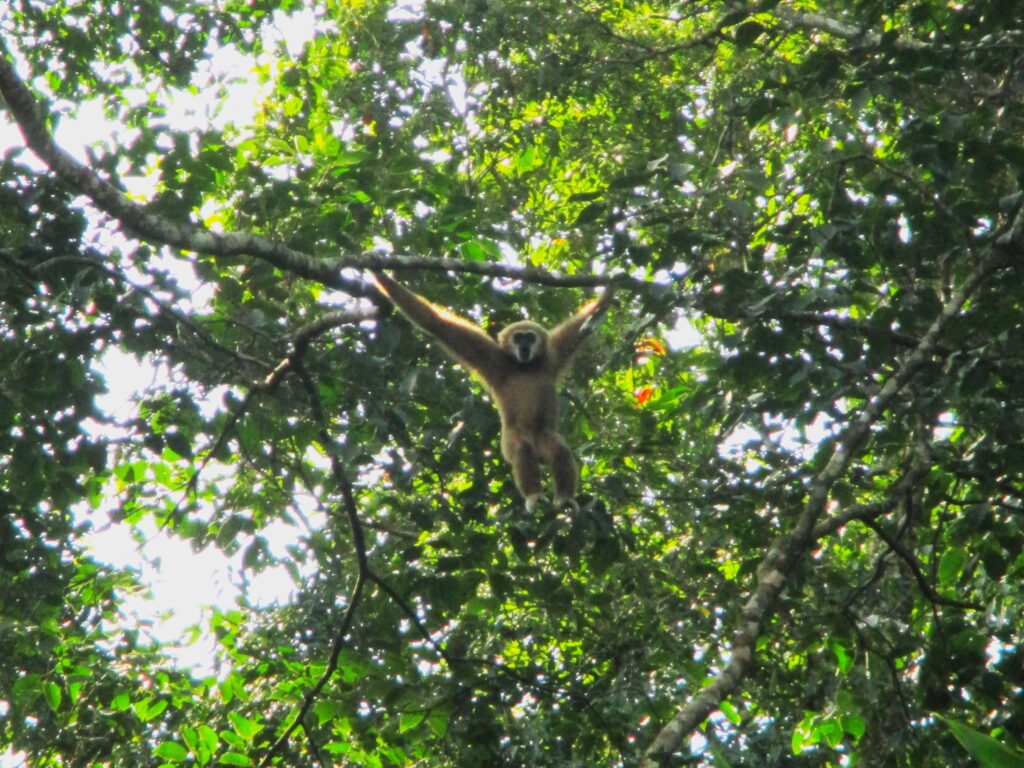
The cat that got away
We decided we would walk between the two campsites, along the road, in the hope of quietly observing more wildlife in the park. After a few largely uneventful hours, we spotted a creature we hadn’t expected – a leopard, creeping along the edge of the jungle. Although it was around 100 metres away it looked large, and beautiful, but dangerous.
I was startled and I exclaimed quite loudly, which seemed to frighten the leopard, and it disappeared into the trees. I was initially disappointed my exclamation meant I didn’t have time to take a photo of the magnificent beast. In hindsight, it’s better it moved away rather than approach us. I can appreciate the memory of that moment, fortunate to have seen one at all.
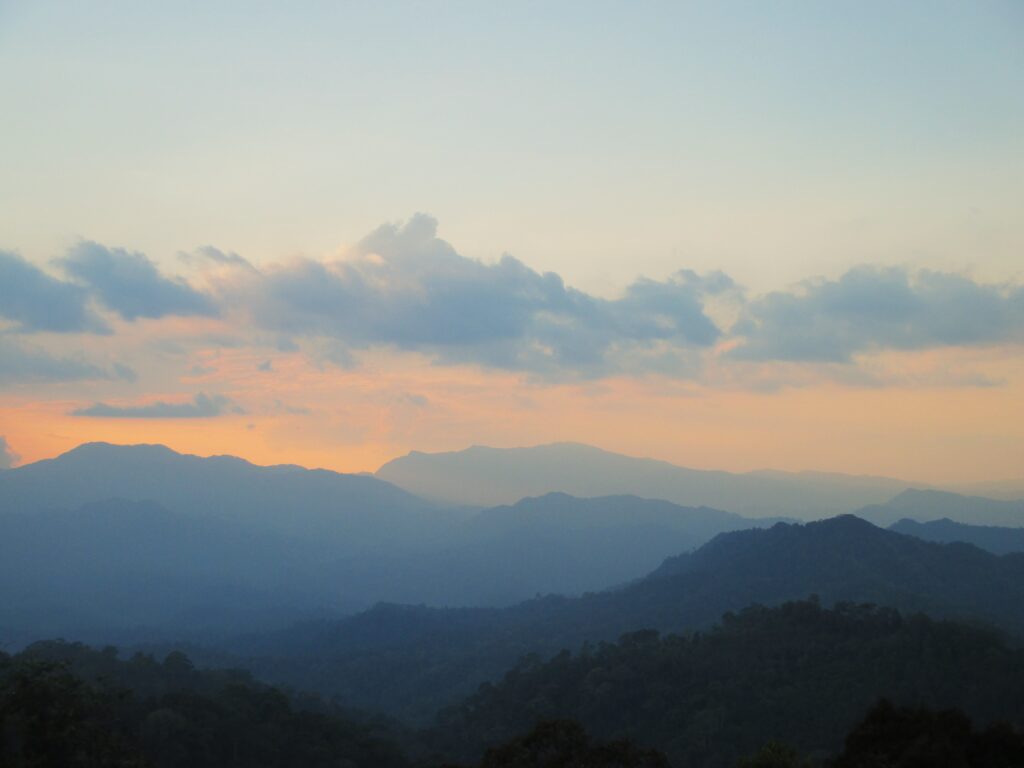
Leaving Thailand
Approaching the end of the 30-day visa, the return to Bangkok was a short one – to take a train to the border of Cambodia. It was quite comfortable and a quick way to head east, on way to the next chapter of this journey.
On leaving Thailand, I felt very pleased with my time there. Especially after being indifferent towards the tourism on the islands. The national parks were a revelation and I have since learnt there are many more to visit.
Thailand has a variety of offerings to travellers. The intrepid traveller may venture away from the packed-out mainstream destinations, unearth unexpected gems, often less well-known – and all the better for it.
